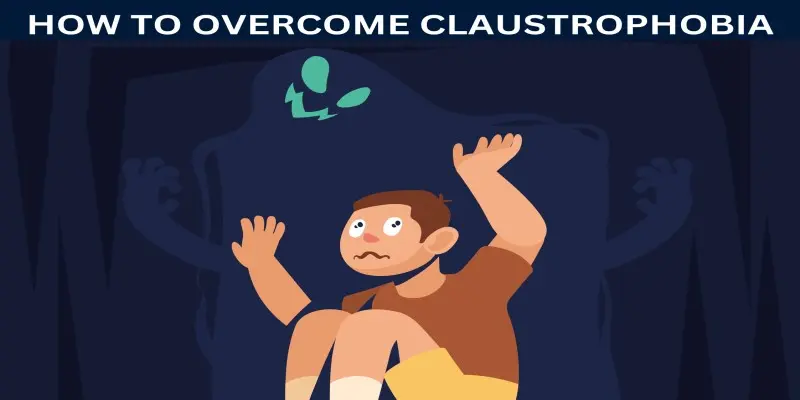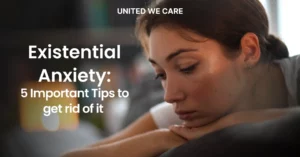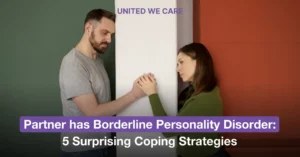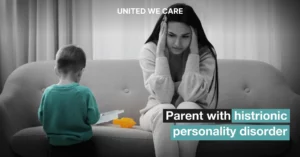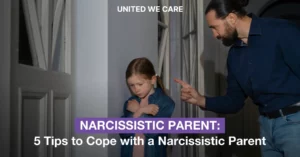Introduction
As we learn from evolutionary psychology, our early ancestors had to be on constant alert to survive. For them, getting trapped somewhere could mean danger and death. Hence, their response towards being confined was justified and helped them be safe. However, as a society, we have evolved in a way that we do not have to be on the lookout for such a situation that threatens our lives. But we’ve still inherited these intense stress reactions to enclosed spaces, and they do not serve us in any way. What was once our survival response has now turned into claustrophobia.
Now, when someone with this fear finds themselves in a small, closed space, their body starts reacting as if they are in very real danger. The fear of not being able to breathe freely and the feeling of helplessness which accompanies it further aggravates the situation.
What is Claustrophobia?
Imagine this: You’re in an elevator. It’s not too small, but you start becoming increasingly aware that you’re in a closed confined space. Your heart rate increases, and you’re breathing faster because you feel trapped. The rational, logical part of you knows that it’s just an elevator and that the doors are going to open soon enough. Yet, you continue to panic until the doors open, which is when you finally take a deep breath and feel normal again. If this sounds familiar, you may have claustrophobia.
Claustrophobia is the intense fear of enclosed spaces, so much so that it affects your day-to-day functioning. You may experience physiological symptoms such as trembling, sweating, short breaths, and increased heart rate and psychological symptoms such as anxiety and panic.[1]
Common triggers for claustrophobia are small rooms without windows, aeroplanes, MRI scans, store dressing rooms, and tunnels.
If you experienced being confined during childhood and were traumatised by it, there’s a high chance of your primitive fears being triggered and turning into claustrophobia. Similarly, if someone close to you was claustrophobic, you may have learned from their reactions as a child and ended up developing this phobia yourself.
Research indicates that 12.5% of people worldwide are claustrophobic [2] and that if you have any other anxiety disorders, you may be more likely to develop this condition.
How to Overcome Claustrophobia?
Psychotherapy is commonly used to treat claustrophobia. Different types of therapies can help manage your fears and triggers, such as:
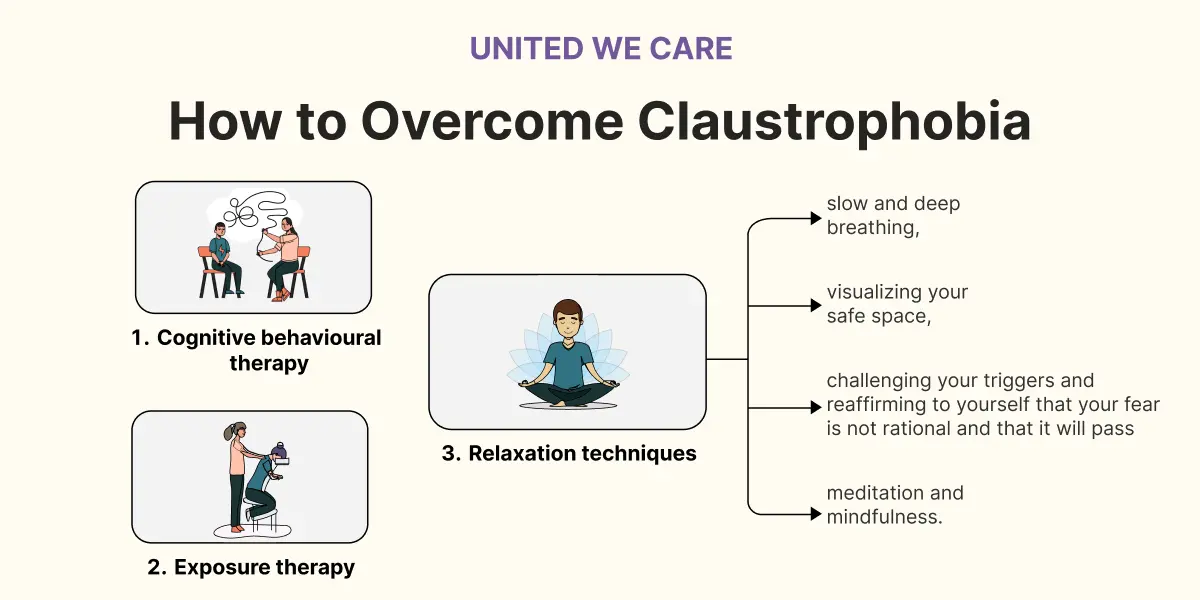
Cognitive behavioral therapy:
CBT focuses on identifying and altering thought patterns and behaviors that do not serve you to those that do. As you change your thoughts, you are able to change your reactions to a claustrophobic situation.
Exposure therapy:
In this therapy, you will be exposed to your fears in a safe, clinically controlled setting. The idea is that you’ll be able to face your triggers head-on, and the more you are exposed to them, the less you will fear them.[3]
In conjunction with therapy, your doctor may also prescribe you antidepressants or anti-anxiety medication to treat your physical symptoms.
Relaxation techniques:
You may also try relaxation techniques such as:
- slow and deep breathing,
- visualizing your safe space,
- challenging your triggers and reaffirming to yourself that your fear is not rational and that it will pass
- meditation and mindfulness.
Ultimately, creating awareness about your fears, what triggers you, and how you respond in a claustrophobic setting is key to learning to manage the condition.
How To Overcome Claustrophobia In An MRI?
If you’re claustrophobic, the MRI machine might not be the best place for you to be. However, it’s an important and necessary procedure for the upkeep of your health. To feel more comfortable while doing an MRI scan, you can:
- Talk to your doctor and ask them to explain the procedure to you in detail, such as the position you’ll have to be in, the duration of the procedure, and how you can communicate with them in case of any discomfort. They may even suggest a wide-bore MRI machine which can help you with your condition.
- Create a more comfortable environment to take the scan in by having an eye mask, a blanket, some soothing music to calm you down, and wearing earplugs. You can even request a mirror or prism glass, which would allow you to see outside the machine and make you feel less confined.
- Focus on your breath by breathing slowly and deeply, and visualize your safe space to keep you grounded during the scan.
- Bring along someone you trust to help you feel calmer and safer in their presence.
How To Overcome Claustrophobia On A Plane?
Since planes are enclosed spaces, your claustrophobia might get triggered. Some ways to make your air travel smoother are:
- Pay attention to the flight attendant when they’re explaining to you the layout of the aircraft and where the exits are.
- Ditch the window seat and go for an aisle seat to give you more space and freedom to get up and move around if needed.
- Keep yourself occupied with your favorite activities such as books, movies, and music. These will help you distract yourself from your fear.
- Connect with your breath and actively try to calm yourself down.
Conclusion
Feeling claustrophobic can hold you back from doing simple, regular things. This fear of enclosed spaces, suffocating, and losing control roots back to our primitive responses for survival that once kept us safe but are no longer relevant in today’s day and age.
Having a parent with this condition or experiencing a traumatic event around being trapped can trigger claustrophobia.
Self-help strategies that you can try are creating awareness around your fears, challenging them, affirming that they will pass, visualizing your happy place, and meditating.
CBT and exposure therapy are widely used to treat claustrophobia. At United We Care, we offer the most appropriate, clinically backed solutions for all your needs for well-being.
References:
[1] Wiederhold, B. K., & Wiederhold, M. D. (2005). Claustrophobia. In B. K. Wiederhold & M. D. Wiederhold, Virtual reality therapy for anxiety disorders: Advances in evaluation and treatment (pp. 165–171). American Psychological Association. https://doi.org/10.1037/10858-015
[2] Vadakkan C, Siddiqui W. Claustrophobia. [Updated 2023 Feb 8]. In: StatPearls [Internet]. Treasure Island (FL): StatPearls Publishing; 2023 Jan-. Available from: https://www.ncbi.nlm.nih.gov/books/NBK542327/
[3] Brett J. Deacon, Jennifer T. Sy, James J. Lickel, Elizabeth A. Nelson,
Does the judicious use of safety behaviors improve the efficacy and acceptability of exposure therapy for claustrophobic fear?, Journal of Behavior Therapy and Experimental Psychiatry, Volume 41, Issue 1, 2010, Pages 71-80, ISSN 0005-7916, https://doi.org/10.1016/j.jbtep.2009.10.004

